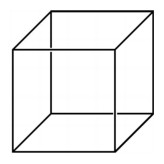As a mechanical engineering student at UCLA, I spend majority of
my time at Boelter hall and Engineering IV. It is true that our school is
divided to north and south campus; however, even as a south campus major, I do
not venture to other STEM buildings.
Map of UCLA with different subdivision. Yellow represents the north campus and orange represents the south campus.
As Sir Ken Robinson state in the RSA Animate video, universities have facilitated the students’ and professors’ movements such that even on UCLA campus which has 419 acres, my movements are limited to 2 buildings. Separation of the majors have eased our life; however, it completely separates the student body. Not only at UCLA, but also throughout my childhood, I was told to focus either on STEM or arts. My mother invested in math and science tutors for me to take from kindergarten to high school, but I only took piano lessons for two years. The paradigm mentioned by Sir Ken Robinson is still prominent in our society despite the two cultures, mentioned by Snow, clashing in reality.
Although I was told throughout my life that art and engineering
were two opposing subjects, as I try to become a product design engineer, I
understand the necessity to understand and be familiar with arts. To create
products for consumers, it is vital that the component can accomplish its task
and attract the customers’ eyes. This would require understanding of trending
shapes, materials, and finish of products. Products that consider these factors range from cars to refrigerators.
Lamborghini with carbon fiber outer shell for aerodynamics and appearance.
Additionally, studying the arts provide
creative solutions for engineering. For example, NASA was able to maximize the
solar panel area for their satellite using ideas from origami, while keeping the
component light.
NASA's solar panel designed by influence from origami.
During the 4 years in college, I thoroughly studied equations and the effect of different situation on a component, but I did not study the influence of arts on the public and their use in
engineering. Universities must change in their method of educating the future generation of students to combine the two cultures together and to erase the stereotype of the "mad scientist" and "poor artist".
Sources:
- Snow, C. P. “Two Cultures and the Scientific Revolution.” Reading. 1959. New York: Cambridge UP, 1961. Print.
- theRSAorg. “RSA ANIMATE: Changing Education Paradigms.” YouTube, YouTube, 14 Oct. 2010, www.youtube.com/watch?v=zDZFcDGpL4U.
- “UCLA Map - Los Angeles.” Los Angeles • Mappery, www.mappery.com/UCLA-Map.
- Greicius, Tony. “Solar Power, Origami-Style.” NASA, NASA, 21 July 2015, www.nasa.gov/jpl/news/origami-style-solar-power-20140814/.
- “Lamborghini_SS02.JPG.” It Computer Mobil Wissenschaft Netzwerk Nachrichten, www.itplatz.net/lamborghini-will-autos-mit-kohlefaser-pleuelstangen-zu-bauen-roadshow/lamborghini_ss02-jpg/.
- Krauss, Lawrence M. “An Update on C. P. Snow's ‘Two Cultures.’” Scientific American, 1 Sept. 2009, www.scientificamerican.com/article/an-update-on-cp-snows-two-cultures/.






Comments
Post a Comment